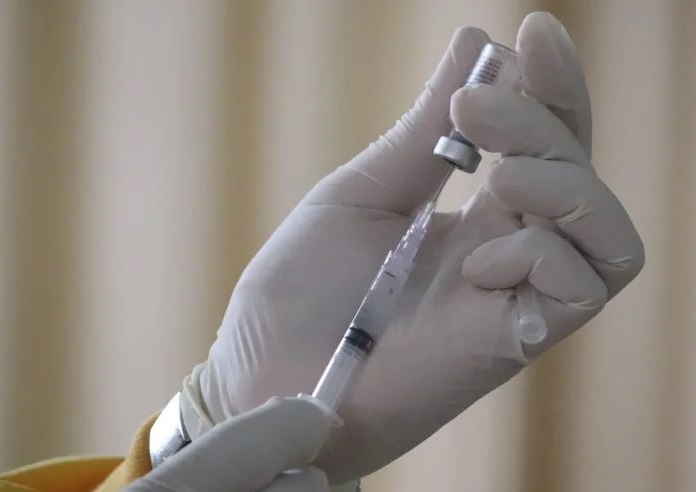BCG Revaccination Hopes Dim for TB Prevention
7 May 2025
Trial fails to show impact on keeping youth from sustained infection
Key Takeaways
- Bacille Calmette-Guérin (BCG) revaccination didn’t help prevent sustained Mycobacterium tuberculosis infection in initially uninfected adolescents without HIV in a randomized trial from South Africa.
- The trial couldn’t rule out an impact on subsequent tuberculosis disease, which it was not powered to assess.
- The findings follow a signal for benefit against sustained infection in youth in a prior phase II trial but negative results in adults in another randomized trial.
Bacille Calmette-Guérin (BCG) revaccination didn’t help prevent sustained Mycobacterium tuberculosis infection in initially uninfected adolescents without HIV in a phase IIb trial.
Getting the BCG shot in the trial did induce T-cell response but without an impact on sustained conversion to a positive QuantiFERON-TB (QFT) test indicating M. tuberculosis infection that could lead to tuberculosis disease, researchers led by Alexander C. Schmidt, MD, PhD, of the Gates Medical Research Institute in Cambridge, Massachusetts, reported in the New England Journal of Medicine.
A prior phase II trial had shown that BCG revaccination in teens led to 45.4% efficacy in reversion from positive to negative QFT compared with placebo, substantially more than seen with an experimental vaccine candidate for this secondary endpoint in the trial.
As this “could indicate successful immune control or clearance of M. tuberculosis infection, thus decreasing the risk of progression to disease,” Schmidt and colleagues’ BCG REVAX trial was designed as a confirmatory study.
However, it showed no such trend. The hazard ratio for the primary endpoint of sustained QFT test conversion was 1.04 (95% CI 0.73-1.48) with revaccination versus placebo, for a vaccine efficacy point estimate of -3.8% (95% CI, -48.3 to 27.4) at the median 30 months of follow-up.
The researchers noted a similar lack of BCG revaccination efficacy in prevention of sustained M. tuberculosis infection in a large trial of adult healthcare workers in Brazil both for initial and sustained QFT test conversion.
“Given that a lack of vaccine efficacy was observed in two randomized, controlled trials that involved participants with different ancestry and age range and were conducted in locations with a different force of infection, geography, climate, and environmental mycobacteria exposure, the evidence supporting BCG revaccination for the prevention of M. tuberculosis infection appears to have weakened,” Schmidt’s group concluded.
“Although this trial does not allow us to draw firm conclusions on the efficacy of BCG revaccination for the prevention of disease, the lack of vaccine efficacy with respect to prevention of infection probably decreases the likelihood of BCG revaccination conferring protection against disease,” they added, noting that a trial underway in India to evaluate prevention of disease with BCG revaccination could provide the final answer.
As to the difference from the hypothesis-generating phase II study, “[t]he inclusion of clinical sites with a lower prevalence of tuberculosis than the sites in the previous trial and the COVID-19-related school shutdowns probably contributed to the lower overall incidence of [interferon-γ release assay] conversion (6.5 to 6.9% vs 9.9% per person-year),” noted an accompanying editorial.
The way forward for new tuberculosis vaccines isn’t clear, wrote editorialists Stephen M. Carpenter, MD, PhD, and W. Henry Boom, MD, both of University Hospitals Cleveland Medical Center.
“Increasing evidence suggests that antigens presented by infected macrophages are key to the development of vaccines that elicit protective T-cell responses,” they noted. “Identification of the antigens that are successfully presented by M. tuberculosis-infected macrophages — and the T cells that are able to recognize them — is likely to be important in the development of protective tuberculosis vaccines.”
The trial included 1,836 adolescents ages 10 to 18 years (median 13) enrolled at five sites in South Africa, a country where tuberculosis disease incidence is among the highest in the world and where adolescents have a fast rise in M. tuberculosis infection of up to 10% per year. The modified intent-to-treat population narrowed to 1,720 after excluding those who didn’t receive the BCG vaccine or placebo as randomized or who didn’t have a negative QFT test 10 weeks after receipt of BCG vaccine or placebo — a criterion “added to exclude participants with M. tuberculosis infection around the time that the vaccine or placebo was administered,” the researchers explained.
Initial QFT test conversion after day 71 of follow-up occurred in 135 participants (15.5%) in the BCG-vaccine group and 125 participants (14.7%) in the placebo group.
Sustained test conversion occurred in 62 of 871 (7.0%) participants in the BCG-vaccine group and 59 of 849 (7.1%) participants in the placebo group. This primary endpoint outcome was defined by an initial conversion on the M. tuberculosis-specific interferon-γ release assay QFT from negative to positive, followed by two additional positive QFT tests at 3 and 6 months after the initial conversion.
Further analyses by percentage of participants with a sustained QFT test conversion and cumulative incidence of a sustained QFT test conversion over time were likewise similar between groups.
Laboratory-confirmed tuberculosis disease developed in three participants in each treatment group.
By Crystal Phend
Primary Source
New England Journal of Medicine
Source Reference: Schmidt AC, et al “BCG revaccination for the prevention of Mycobacterium tuberculosis infection” N Engl J Med 2025; DOI: 10.1056/NEJMoa2412381.
Secondary Source
New England Journal of Medicine
Source Reference: Carpenter SM, Boom WH “To BCG or not two BCG” N Engl J Med 2025; DOI: 10.1056/NEJMe2502491.
Source: MedPage Today

